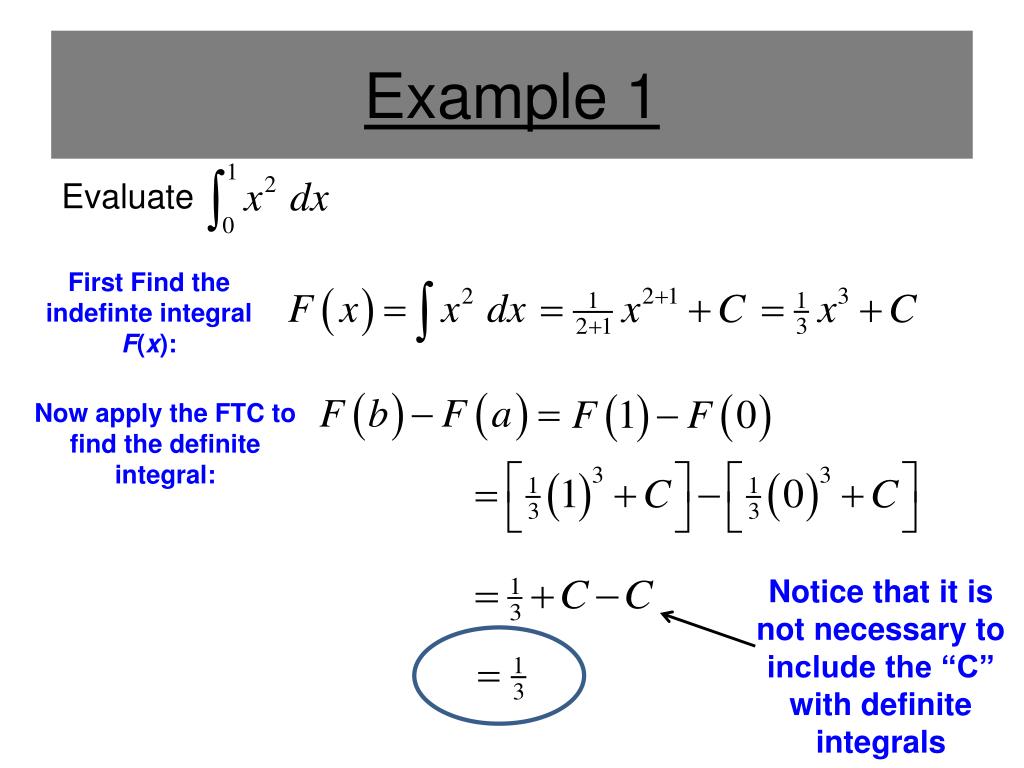

(next): $1$: The Nature of Differential Equations: $\S 2$: General Remarks on Solutions (next): Chapter $1$: Theory of Sets: $\S 9$: Inverse Functions, Extensions, and Restrictions: Exercise $1$ This modern form of Stokes theorem is a vast generalization of a classical result that Lord Kelvin communicated to George Stokes in a letter dated July 2, 1850. 1975: Bert Mendelson: Introduction to Topology (3rd ed.) . Stokes theorem was formulated in its modern form by Élie Cartan in 1945, following earlier work on the generalization of the theorems of vector calculus by Vito Volterra, Édouard Goursat, and Henri Poincaré.$\ds \int_a^b \map f t \rd t = \map F b - \map F a = \bigintlimits $: On the Seashore $(1): \quad f$ has a primitive on $\closedint a b$ $(2): \quad$ If $F$ is any primitive of $f$ on $\closedint a b$, then: Then $F$ is a primitive of $f$ on $\closedint a b$.

If F is integrable on a,b, then baF(x)dxF(b)F(a).


Let $F$ be a real function which is defined on $\closedint a b$ by: Theorem (FTC part 2): Let F be continuous on a,b and differentiable on (a,b). Explain the relationship between differentiation and integration. This theorem relates indefinite integrals from Lesson 1 and definite integrals from earlier in today’s lesson. Let $f$ be a real function which is continuous on the closed interval $\closedint a b$. Use the Fundamental Theorem of Calculus, Part 2, to evaluate definite integrals. Fundamental Theorem of Calculus Part 2 (FTC 2) This is the fundamental theorem that most students remember because they use it over and over and over and over again in their Calculus II class. chose any number in domain of for a and rewrite into required form. The FTC part 2 simply tells that to evaluate a definite integral, we find an antiderivative, plug in the limits of integration and subtract. THE COMPOSITE FUNCTION If, (a composite function) then In Words: Sub u in for t and multiply by u’ĭemonstration: Find: Verify In Words: Sub in for t and multiply by the derivative ofĮxample : Find without Integrating: If, solve forĮxample: Rewriting the Integral Find without integrating: Show middle stepĮxample: Rewriting the Integral - Two variable limits: Find withoutIntegrating: break into two parts. THE COMPOSITE FUNCTION If g(x) is given instead of x: In words: Substitute in g(x) for t and then multiply by the derivative of g(x)…exactly the chain rule (derivative of the outside * derivative of the inside) Since A(x) is a function, what then is the rate of change of that function? Take derivative In words, integration and differentiation are inverse operationsĢnd Fundamental Theorem of Calculus Given:, we want to find Note: a is a constant, u is a function of x and the order matters! “a” is a constant 2nd Fundamental Theorem of Calculus: If fis continuous on an open interval, I, containing a point, a, then for every x in I :ĭemonstration: find In Words: Sub in the function u and multiply by derivative of uĮxample: Find and verify: this Not this = The Definite Integral is actually finding points on the Accumulation graph. Evaluate at 1 Evaluate the Definite Integral for each of these points. The Definite Integral as a Particular Function: Evaluate the definite integral. The part 2 of fundamental theorem of calculus is used to evaluate a definite integral ab f (x) dx by first evaluating the indefinite integral f (x) dx F (x) and then finding the difference of the values of F (x) at the bounds of the integral. Given an Initial Condition we find the Particular Function The first part of the theorem says that if we first integrate and then differentiate the result. If f happens to be a positive function, then g (x) can be interpreted as the area under the graph of f from a to x. The Indefinite Integral (Antiderivative) finds a Family of Functions whose derivative is given. Part 1 (FTC1) If f is a continuous function on a, b, then the function g defined by. 6034 Fundamental Theorem of Calculus (Part 2) AB CALCULUS Section 4.4 The Fundamental Theorem of Calculus The Second Fundamental Theorem of Calculus says the following: If f is continuous on an open interval I.


 0 kommentar(er)
0 kommentar(er)
